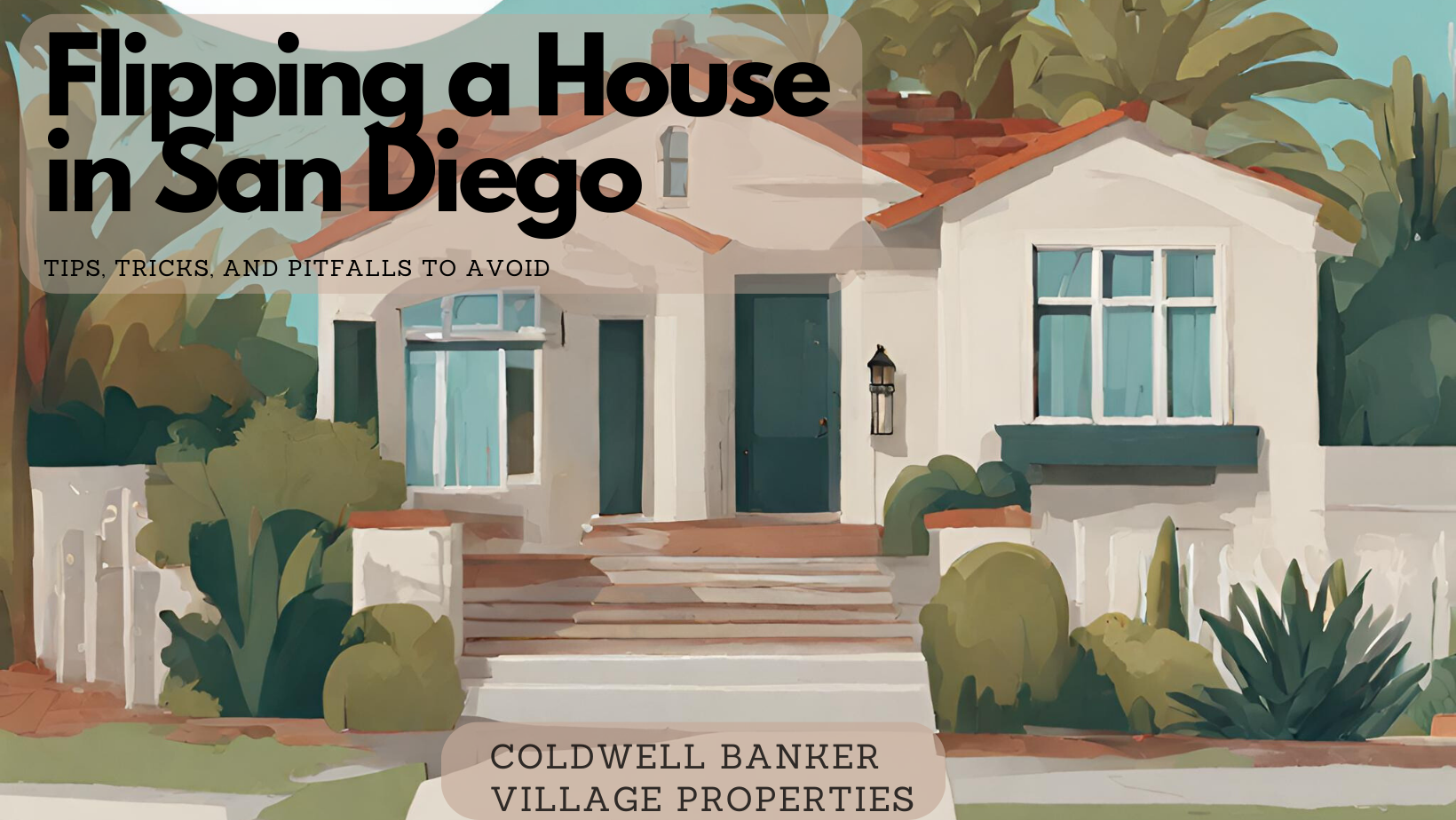Are you looking for an excellent investment opportunity in San Diego County? Large returns, hands-on renovation tasks, and the excitement of the sale all contribute to the Southern California real estate market’s allure for home flipping. However, a significant risk is associated with the possibility of a significant profit. Here are essential factors to consider and pitfalls to avoid if “Flip a house in San Diego” is on your to-do list.
5 Key Factors to Consider Before Flipping in San Diego
- Location: San Diego is home to a wide variety of neighborhoods, each with their own distinct charm. Ensure the house you are considering is in a desirable area, close to amenities, and has growth potential. Review the San Diego County-specific zoning laws and regulations before purchasing to ensure they support your renovation goals.
- Assess the Condition and Unlock Potential: Aim for homes that might look outdated but are structurally intact. Your budget can be quickly depleted by serious problems like termite infestation, mold growth, or foundation problems. On the plus side, the San Diego market can be a gold mine for houses with the ability to add rooms or square footage.
- Price Point and Profit Margin: It is important to purchase a home for less than its potential market value, but you should avoid paying prices so low they imply serious underlying problems. When accounting for all costs, such as renovations, holding costs, and agent fees, aim for a post-sale profit margin of 20% or more.
- Assess Time and Resources: Do you have the resources and the right team for a profitable flip in San Diego? Make sure you have everything you need, from specialists in the San Diego market to contractors. Another essential component is a realistic project completion schedule, ideally within six months.
- Understanding San Diego’s Market and Demand: Learn about the San Diego real estate market’s most recent trends. Who are your potential buyers? They might be recent graduates, families, or retirees. Customize your renovation to their needs and aggressively market the home using online resources, social media, and local contacts.
Typical Mistakes to Avoid in San Diego House Flips
- Buying a Money Pit: As previously mentioned, a careful analysis is essential. Even a property may require expensive repairs and maintenance.
- Over-ambitious Renovations: Being overly enthusiastic about upgrades can lead to unnecessary expenses. Make sure that each renovation satisfies market demands and will generate a profit.
- Underestimating Costs: It’s about more than just the purchase price and renovation costs. Property taxes, insurance, utility costs during renovations, permit costs, inspection fees, and possible homeowner association fees are additional costs. These can easily accumulate and reduce your profit margins.
- Ignoring the Local Market: San Diego is a diverse county with varying neighborhood tastes and preferences. What might be a desired feature in La Jolla might hold a different appeal in Escondido. Understanding local nuances is crucial.
- Skimping on Quality: Cutting corners on materials or hiring subpar contractors can lead to future problems. Buyers are knowledgeable and frequently pick up on shoddy workmanship or materials, which can delay a sale or reduce the value of your property.
- Neglecting Proper Licensing and Permits: Skipping out on the necessary permits can lead to hefty fines. Additionally, when it comes time to sell, a deficiency in legal permits may put off a lot of prospective buyers.
- Poor Timing: The real estate market can be cyclical. It can be disastrous financially to buy a property for a flip during a period of high demand and sell it during a slump. The key is to monitor market trends and anticipate upcoming changes.
- Misjudging Your Target Audience: Not understanding who your potential buyers are can result in renovations that don’t appeal to the market. Longer holding periods and lower profit margins may result from this.
- Overpricing the Finished Property: After putting in so much effort and money, there might be a tendency to overvalue the home. An overpriced property may remain on the market longer and incur higher holding costs.
- Not Accounting for Contingencies: Unexpected issues always arise in house flipping. Lack of a contingency budget can cause financial stress, whether from a sudden rise in material costs or an unforeseen plumbing issue.
With its booming real estate market, flipping houses in San Diego can be a golden opportunity. However, being aware of these pitfalls and exercising caution will make your experience flipping houses profitable and enjoyable.


